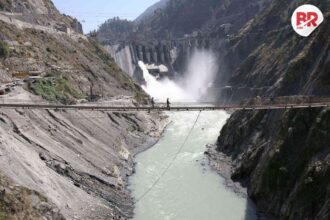
India’s latest satellite launch faced a setback on Sunday morning. The Indian Space Research Organisation (ISRO) confirmed that its Earth observation satellite mission, EOS-09, was unsuccessful. The mission was launched at 5:59 AM from the Satish Dhawan Space Centre in Sriharikota using the PSLV-C61 rocket.


ISRO Chairman said, “There was an issue during the third stage of the rocket, so the mission could not be completed. We are currently analyzing the problem and will share more details later.”
What Went Wrong?
This launch was ISRO’s 101st mission. According to ISRO, the PSLV-C61 rocket worked normally during the first and second stages. However, a problem occurred in the third stage, which is a solid fuel booster that gives a strong push to the satellite after it leaves the lower atmosphere. This stage is supposed to provide a powerful thrust of 240 kilonewtons.
Even though the rocket lifted off successfully and initial stages worked fine, the satellite failed to separate and reach its planned orbit.
About EOS-09 Satellite
EOS-09 is an advanced Earth observation satellite weighing about 1696 kg. It was designed to provide high-resolution images of the Earth using a technology called Synthetic Aperture Radar (SAR). This allows the satellite to take clear pictures in all weather conditions, day or night.
The satellite was expected to help in many areas such as:
- Border and coastal monitoring
- Anti-terror operations (especially after the recent Pahalgam attack and Operation Sindoor)
- Agriculture
- Forestry
- Disaster management
- Water resources
- Defence
Former ISRO scientist Manish Purohit said the satellite would have helped track suspicious movements and would be valuable for national security and real-time monitoring.
What Was the Plan?
EOS-09 was supposed to be placed in a sun-synchronous polar orbit. After its job was done, it had a special feature to deorbit itself using leftover fuel, which would reduce space debris—this is part of ISRO’s commitment to responsible and sustainable space practices.
Despite the setback, ISRO is preparing for another major mission called NISAR, a joint project with NASA. NISAR will use advanced radar to monitor changes on Earth’s surface, track natural disasters, and study the environment. This mission will be launched using the GSLV-F16 rocket and highlights India’s important role in global climate and earth science research.












